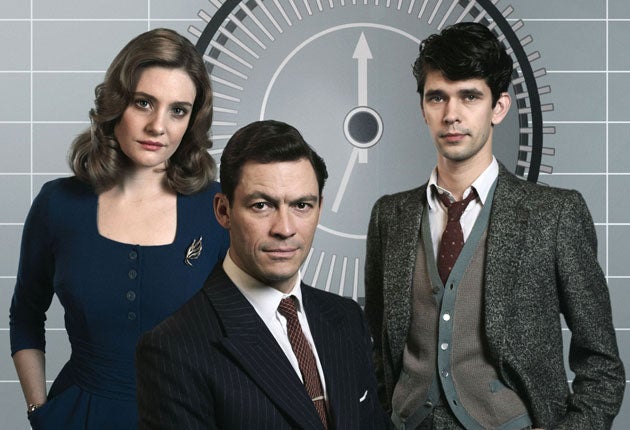David Lister: These creative types have their uniforms just like everyone else
The Week in Arts

When it was reported this week that the London club Soho House had turned away a man for wearing a suit, it seemed laughably odd.
But suddenly all became clear. The man in question had been told by way of explanation that the suit ban was because the club was "a place for the creative industries".
Of course. If any area of life has a dress code, usually a dress-down code, it is the arts. Take your average rock gig. Just where you might think it is natural to be casual, a uniform is de rigueur.
There's sportswear for hip-hop or grime, the latest Topshop dress plus glitter for a girl band, head-to-toe black for emo. Individual artists expect to have their individual styles reflected in the audience. Tinchy Stryder fans are in "star in the hood" gear or Nike; Mumford and Sons aficionados are in waistcoats. Go to see either of the Gallagher brothers and be sure to be in a parka and Adidas. For The Drums, an increasingly popular indie band, it's not just the musicians who are in rolled-up jeans, jock jackets and round-neck T-shirts, it's the entire audience.
Who would dare to dress differently? It would be tantamount to saying that you have no appreciation of the music.
At a Lady Gaga gig, fans who dress to the nines in homage to the performer almost outdress the star. Almost. That's a statement of sorts, but not as much of a statement as that made by fans of older artists whose "I saw the band in 1976" T-shirts aren't just an old garment slipped on in the rush to get to the gig. Such attire says, "Look at me, I'm a real fan and I'm still wearing the tour T-shirt that I bought 35 years ago to show it."
At the other end of the spectrum there's country-house opera. I am off to Glyndebourne today and will put on my dinner jacket and bow tie. I have no wish to be ostracised or be the man in the Bateman cartoon. Besides, most people quite enjoy dressing up occasionally, despite the concern one senses from country opera-house managements that they need to be more egalitarian and end the dress code. They should stop worrying. If they banned evening dress, another uniform would rush to take its place. In fact, there are even hierachies of artistic appreciation in evening dress. A pink bow tie and cummerbund on the Glyndebourne lawns denotes a Wagner specialist.
Not that much has changed since the 18th century when people went to the theatre and opera as much to look at the rest of the audience as at the stage. Arts events demand a uniform just as Soho House does. It might often be studiedly casual and suitably dressed down, but it's a uniform just the same.
Upstaged by the ghost of Pavarotti
Finding a new way of presenting Verdi's most popular aria, "La Donna e Mobile", from Rigoletto, is a challenge to directors. In Jonathan Miller's production at English National Opera, it appeared to come from a jukebox, with the tenor memorably kicking it to get it going again after the initial pause in the song.
This week I saw Lindsay Posner's terrific production of Rigoletto at Opera Holland Park, and he hit on an equally clever notion. In the bar where the tenor sings the aria, there was a television showing Pavarotti performing. The tenor shrugged and turned it off as he commenced the song. It was a neat idea in a production full of great concepts, but I did think it was something of a mixed blessing for the tenor singing the role of the Duke in this production to have the audience's heads buzzing with memories of Pavarotti.
When top buttons had to be done up
Spotting anachronisms in the BBC drama The Hour could become a national sport. Actually, I am thoroughly enjoying the series, set in a BBC current-affairs programme in 1956. There are fine performances from Romola Garai, Ben Whishaw and Dominic West. But there are certain things which don't say 1956. For a start, the secretary Miss Cooper's habit of ending a sentence with an implied question mark may be ubiquitous these days, but I'm not convinced anyone did it even 30 years ago, let alone 50 years ago.
The Ben Whishaw character may be rebellious and part of that rebelliousness may be shown in his leaving his collar unbuttoned while wearing a tie, but again I don't think a BBC interviewer would have been allowed to do a piece to camera with unbuttoned collar back then. It would be unusual even now. But in the 1950s? Even Muffin the Mule had to be buttoned up.
d.lister@independent.co.uk
Subscribe to Independent Premium to bookmark this article
Want to bookmark your favourite articles and stories to read or reference later? Start your Independent Premium subscription today.

Join our commenting forum
Join thought-provoking conversations, follow other Independent readers and see their replies